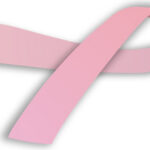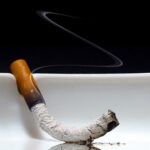If you are thinking about quiting smoking and believe that chewing tobacco is a safe alternative, think again. In many ways chewing tobacco is worse than smoking. The dangers of chewing tobacco are numerous.
Chewing tobacco is commonly available in two major types; snuff and loose leaf. Snuff is a fine cut tobacco leaf where as loose leaf chewing tobacco is a whole leaf either loose or in a twist or block.
Effects of Chewing Tobacco:
More Nicotine than a Cigarette – Research from the Center For the Advancement of Health indicates that the amount of nicotine contained in one dose of chewing tobacco is significantly larger than that of a single cigarette. The actual amount of nicotine in chewing tobacco is required by law to be reported to the government but that information is closely guarded and not available to the public because it is regarded as a trade secret.
Lung Cancer, Breast Cancer, Pancreatic Cancer, Oral Cancer and more Cancer – According to the American Association for Cancer Research one dose of chewing tobacco contains more of the carcinogen that has been linked to lung cancer than one cigarette. Similar carcinogens linked to pancreatic cancer are also higher in smokeless chewing tobacco than in cigarettes. Wake Forest University School of Medicine has released research that suggests that the use of chewing tobacco may increase the risk of breast cancer 800%.
Gum Recession – Gum Recession is caused by the contact of the chewing tobacco with the gum. Most chewing tobacco users will have the tobacco in their lip for much of the day.
Dental Caries (tooth decay) – Research by the University of Alabama Birmingham has linked chewing tobacco with tooth decay. Scientists at the National Institutes of Health agree. The normal chewing tobacco user will hold the chew between their lip and gum for 30 minutes at a time throughout the day. This contact causes the enamel to decay which leads to dental caries. The gum recession allows more of the tooth to be in contact with the tobacco and other bacteria.
Depressed Ability to Perform Complex Tasks – The nicotine in smokeless tobacco reduces an individual’s ability to perform complex tasks that require hand and body movements to adjust to new visual feedback, according to research from the Center For the Advancement of Health.
Heart Attack – Because chewing tobacco contains nicotine in higher doses than does cigarette smoke chewing can be more harmful to your heart than smoking. According to a Medscape article titled Use of Chewing Tobacco or Snuff May Increase Mortality from Heart Disease, Stroke, nicotine in any form increases your risk for heart attack and stroke.
There are many more risks to the use of chewing tobacco than I have listed here. Most, if not all, doctors will tell you that chewing tobacco is not a safe alternative to smoking.
From my research I have learned that the best method of quiting either smoking or chewing tobacco is through a program that replaces the nicotine and slowly moves the individual off of the dependency.





